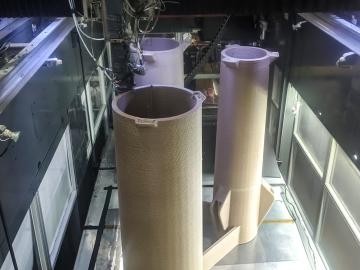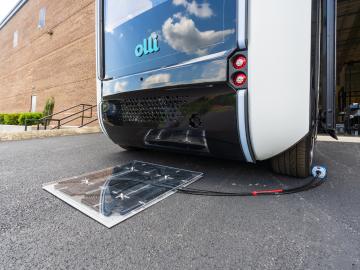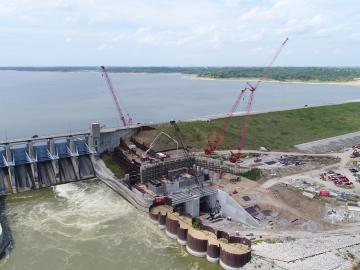
Filter News
Area of Research
- (-) Energy Science (46)
- (-) Supercomputing (58)
- Advanced Manufacturing (5)
- Biology and Environment (23)
- Computational Biology (1)
- Computational Engineering (1)
- Computer Science (6)
- Electricity and Smart Grid (2)
- Fusion and Fission (17)
- Fusion Energy (11)
- Isotopes (1)
- Materials (51)
- Materials for Computing (10)
- National Security (16)
- Neutron Science (16)
- Nuclear Science and Technology (13)
- Quantum information Science (1)
- Sensors and Controls (1)
- Transportation Systems (1)
News Type
News Topics
- (-) Frontier (18)
- (-) Fusion (1)
- (-) Grid (28)
- (-) Hydropower (3)
- (-) Machine Learning (11)
- (-) Materials Science (22)
- (-) Physics (4)
- (-) Summit (29)
- 3-D Printing/Advanced Manufacturing (46)
- Advanced Reactors (3)
- Artificial Intelligence (25)
- Big Data (21)
- Bioenergy (14)
- Biology (12)
- Biomedical (14)
- Biotechnology (3)
- Buildings (25)
- Chemical Sciences (6)
- Clean Water (7)
- Composites (11)
- Computer Science (72)
- Coronavirus (16)
- Critical Materials (7)
- Cybersecurity (7)
- Energy Storage (42)
- Environment (46)
- Exascale Computing (17)
- Fossil Energy (1)
- High-Performance Computing (28)
- Isotopes (1)
- Materials (22)
- Mathematics (4)
- Mercury (2)
- Microelectronics (1)
- Microscopy (6)
- Nanotechnology (8)
- National Security (4)
- Neutron Science (8)
- Nuclear Energy (6)
- Partnerships (4)
- Polymers (8)
- Quantum Computing (15)
- Quantum Science (15)
- Security (4)
- Simulation (14)
- Software (1)
- Space Exploration (5)
- Statistics (1)
- Transportation (46)
Media Contacts

Improved data, models and analyses from ORNL scientists and many other researchers in the latest global climate assessment report provide new levels of certainty about what the future holds for the planet

A team of researchers at Oak Ridge National Laboratory demonstrated the ability to additively manufacture power poles from bioderived and recycled materials, which could more quickly restore electricity after natural disasters.

Oak Ridge National Laboratory researchers demonstrated their wireless charging technology on an autonomous electric vehicle for the first time in a project with Local Motors.

Scientists at Oak Ridge National Laboratory have developed a solvent that results in a more environmentally friendly process to recover valuable materials from used lithium-ion batteries, supports a stable domestic supply chain for new batteries

At the Department of Energy’s Oak Ridge National Laboratory, scientists use artificial intelligence, or AI, to accelerate the discovery and development of materials for energy and information technologies.

A method developed at Oak Ridge National Laboratory to print high-fidelity, passive sensors for energy applications can reduce the cost of monitoring critical power grid assets.

Oak Ridge National Laboratory researchers have demonstrated that a new class of superalloys made of cobalt and nickel remains crack-free and defect-resistant in extreme heat, making them conducive for use in metal-based 3D printing applications.

A new Department of Energy report produced by Oak Ridge National Laboratory details national and international trends in hydropower, including the role waterpower plays in enhancing the flexibility and resilience of the power grid.

Since the 1930s, scientists have been using particle accelerators to gain insights into the structure of matter and the laws of physics that govern our world.



